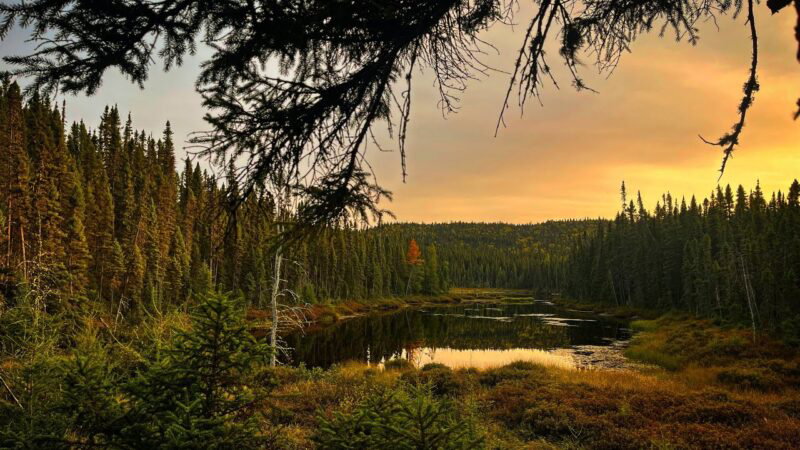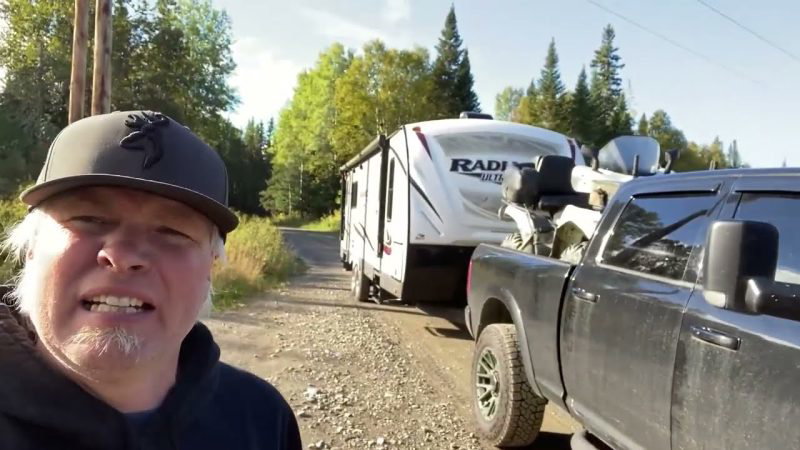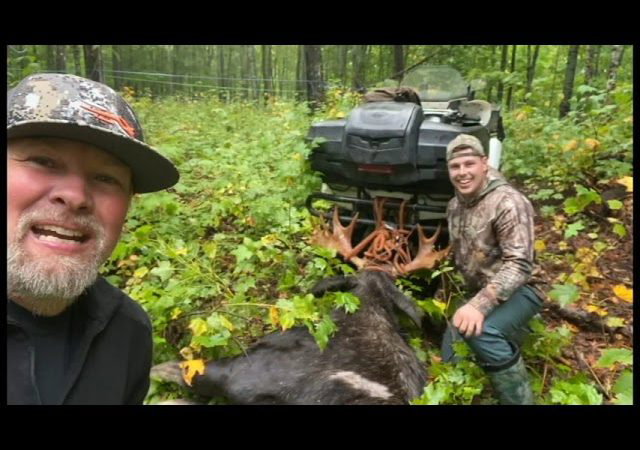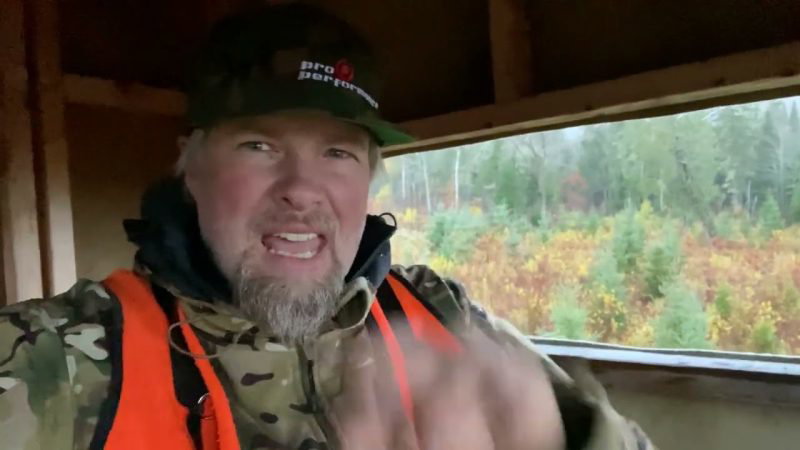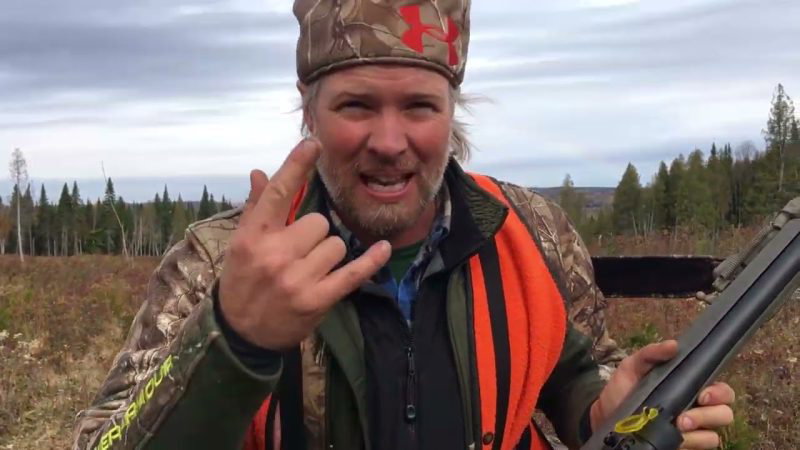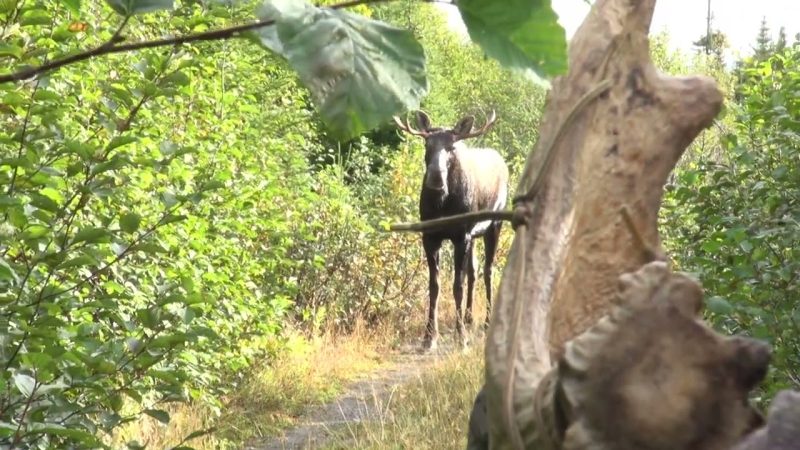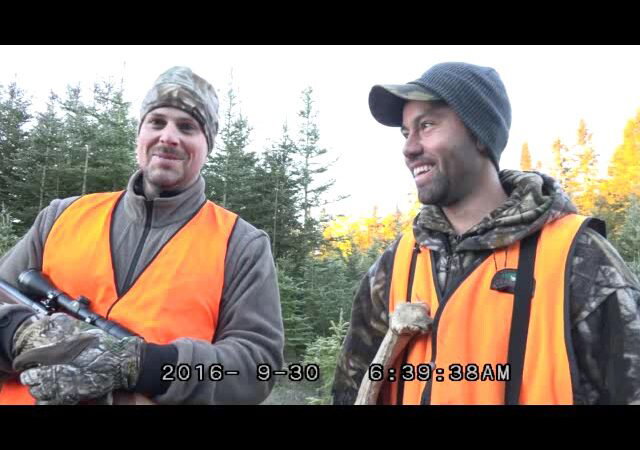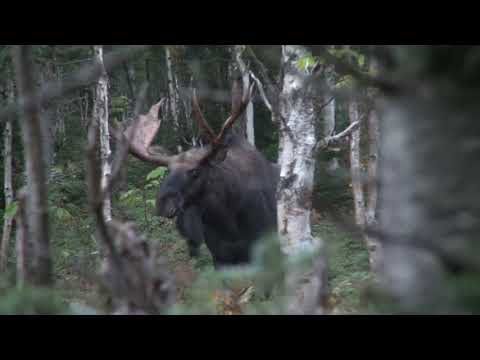Reviews
User Score
Rate This
Descriptions:
Moose – Dirty males and reactive females
Moose – Male moose and reactive females | Adventure Hunting Moose Fishing Roe Deer Outfitters & OutdoorsA bull moose scratches the ground before urinating and making a mess. It’s fascinating to see the behavior of the females around him! Take the opportunity to listen to the vocalizations…
Moose hunting near water
Moose are almost exclusively associated with waterways. Lakes, streams, rivers, swamps and bogs are their preferred habitats. So, anyone intending to hunt these magnificent creatures needs to know how to hunt in these areas.River hunting presents both challenges and opportunities. Most of the time, waterways are easily navigable by boat or canoe, but just because a certain area looks productive doesn’t mean it will be. It’s common to spend too much time in the wrong place. Being in the right place at the right time is key. And doing everything by the book is vital. Here are a few pearls of knowledge I’ve gathered over the years. On the whole, my system is as follows: travel the network of lakes or rivers by boat or canoe, find a likely habitat, check for signs, make a few calls and return to these locations throughout the season. hunting. As soon as you see or hear a moose For the past nine seasons, I’ve had the incredible privilege of hunting moose on fly-in lakes in northern Ontario with an outfitter who specializes in hunting and harvesting moose. fly-in fishing in and around Wabakimi Park. I learned a lot aboutmoose hunting on rivers during this period. Six hunts were successful, with 10 moose harvested. Like everything else, we can learn from our victories and defeats. Here’s what you need to know about river hunting.
Stay on the move Moose
One of the best pieces of advice I can give is to be constantly on the move. Don’t stay in one place for hours on end just because it feels right or because you have a hunch. The exception to this rule may be known breeding areas where you’ve already called moose, but even these areas are changeable from year to year. On one of my hunts, my partner sat in the same spot for the whole week. He was a director of a large company and his stress level was at its highest. His idea of a great hunt was to sit in the blind, look out over an impenetrable swamp and ponder the meaning of life, hoping a moose would appear.That never happened. The lesson I’ve learned is that it’s always possible to think while on the move in search of a moose. On closer inspection, the swamp he’d chased away was riddled with wolf tracks around the edges. It’s likely that a pack was working in this area in search of caribou and moose.A bright orange hunter paddles across a tranquil lake.Remember that moose habitat during the rut may differ from summer feeding areas. Males are often found on wooded ridges near a lake or river system. They choose these places so they can see, hear and smell other moose. Sandy beaches are excellent places to look for fresh moose tracks. Some say moose like to browse, just like humans. I’m not sure that’s the case, but it’s certain that their tracks are easy to spot, even from the boat, and that it’s easy to distinguish fresh tracks from old ones. In my experience, it’s more common to see males than females during the rut. I suspect it’s because the males are the ones chasing them.
Searching for bulls on Moose Beach
When you spot a sandy beach or other likely spot, get out there and check it out. Not only do you have to move constantly along a stream, but you have to stop frequently to check out areas that look good.On one of our hunts, I was patrolling a sandy beach looking for moose tracks when I spotted a submerged truck tire just off shore. I stopped the boat, pulled the tire out of the water and dragged it to shore. As the boat was full of equipment, I decided to return later in the week to retrieve it. (We were building a dock at camp and the tire would make a great bumper for the boat.).A few days later, two members of my group who were on another boat spotted the tire and went ashore to retrieve it. Once they set foot on the sandy beach, they decided to do a little calling and made a sad cow call. To their surprise, a distant bull responded and, about 30 minutes later, a nice bull was on the ground.Later that afternoon, they returned to camp with moose meat, while I brought the tire back.Perseverance pays offA hunter with a downed mooseI took moose on the first day of the hunting, the last, and everything in between. It’s all about being in the right place at the right time, what I call the magic of the hunt. One of my partners used to say, “You can’t hunt moose from the lodge” as we left the dock each day. While there may be rare exceptions to this rule, most of the time, he’s right.My 2017 hunt was a classic example of never giving up. I was hunting on a small lake in Wabakimi Park with my friend Ken Funk. We had been hampered all week by incessant cold drizzle and strong winds. The only animal we saw was a large black bear, which was not on our program. On the last full day of our hunt, the weather cleared and a buck answered my call at dawn. However, as the morning wore on, we realized he wasn’t going to show. We returned to camp to clean the hut and pack up, as the plane was due to pick us up the next morning. At Ken’s insistence, we went out in the late afternoon for one last sunset hunt.I returned to the same spot and took a little nap on the rock where I’d planned to call around last light. When I woke up, I made a sleepy cow call. To my surprise, I heard a distant growl that sounded about a kilometer away. The bull continued to growl with the regularity of a metronome, but each time louder, until he was in sight. I shot him with my .270 WSM at a distance of 20 paces. To this day, it’s the most exciting hunting moment I’ve ever experienced.Texting via satelliteGroup hunting is essential to a successful moose hunt on any waterway. Last year, our four-person group was equipped with satellite communication units. We grouped together in two boats and made sure that each pair had access to a satellite messaging device. It was the best way to communicate. Two-way radios can be temperamental in hilly terrain, and their range may be less than advertised. During this hunt, I received a message informing me that a male had just answered the call of the other pair of hunters. My partner and I stopped hunting immediately, as our group was down to a single male. We quickly paddled out to find our friends and they had indeed shot this buck.Garmin satellite unitSatellite texting units cost between $350 and $450. Service plans start at $20 per month with very limited use. More comprehensive plans range from $35 to $125 per month, and most allow you to suspend service during periods when you don’t need it. Remember, you must always stay within the provincially regulated five-kilometre radius when hunting in a group.Long-distance callsI choose vantage points along waterways where my call will be heard over long distances in several directions. The lake where I harvested my 2017 buck has one of the best calling points I’ve ever encountered. It’s a rocky point high above a bay, centered in a large burn from a recent forest fire. The bay wraps around this point, offering visibility of around 300 degrees. The surrounding hills are visible from almost a kilometer away. In calm weather, my calls go at least as far in all directions.I most often make cow calls, but I’ve known situations where only bull grunts, followed by paddle strokes in the bushes or moose antler blows have attracted responses. Moose probably have their reasons for responding favorably to one call rather than another, and it’s useful to vary your calls. Once you’ve got an answer, don’t change the music. In fact, if he keeps getting closer, don’t call at all unless he hangs up for a while.Don’t make noiseElks have an uncanny ability to spot exactly where you’re calling from, so once they’re close, keep quiet. The most delicate situation is when a male responds to your call in silence (younger, less dominant males often approach in silence). Listen for twigs snapping and wood rubbing against branches. A bull will almost always circle around to your leeward side to pick up your scent, so anticipate by positioning yourself so you can see in that direction.Be sure the moose can hear you. Like humans, everyone has a unique voice and character, so if your moose call doesn’t sound exactly like what you heard on the instructional videos, don’t worry. And be persistent. Several times, moose (or their tracks) appeared in the morning at the exact spot where I had called the night before. One year, I harvested a bull moose on the second day of my hunt this way.Sometimes, a distant bull will respond, but won’t come closer, so try to reverse the norm and approach him. On a hunt where this was happening, my partner and I slipped discreetly into our canoe and headed down river towards the male. We stopped on the bank, took cover and continued calling him and raking the bushes. This time, he responded with great enthusiasm and appeared a few moments later. It was almost as if he’d already warned us that we were on the edge of his territory, but this time he said, “Ok sir, now I’m going to kick your ass!”. It’s possible he had a cow with him, but we’ll never know.Many times I’ve called out while paddling a river and had no answer until I was a few hundred yards from them. I’m sure they heard my calls from a mile away, but they preferred to keep quiet.Prepare for the shotWhen you find a spot that looks like it might be fruitful to make a call and sit for a while, look for cover and good shooting support. I carry a shooting stick with me on all my hunts. Its adjustable legs enable you to adopt a variety of shooting positions, and it can also be used as a walking stick. To prevent my silhouette from being silhouetted against the sky, I simply take a few steps down from the top of a ridge. Look for some kind of brush to break up your silhouette and limit movement.If it’s a close encounter, establish shooting lanes for your shot, whether it’s a bullet or an arrow. Don’t forget that moose have a curious habit of showing up where you least expect them, so don’t call until you’re ready to act. One of the biggest mistakes you can make is calling from a motorboat in the middle of a bay. A moose may respond and/or appear instantly and, as you’re in a moving motorboat, you’re not in a legal position to shoot and you can’t move discreetly to shore without spooking the animal.It’s never too lateIt’s also possible to report a bull outside peak periods or even after the rut. Data indicate that September 27 is the peak of the moose rut in much of North America, and, broadly speaking, rutting behavior is common from two weeks before this date to two weeks after. However, my good friend and moose calling expert, Cale Wilson, called bulls from the last week of August until the end of the season in mid-December.I’ve been an outdoorsman all my life and nothing is as exciting to me as hearing a moose answer my call. It’s visceral, heart-pounding and unforgettable. You could say it’s what keeps me coming back to the streams each season to hunt moose.SOURCE: OODMag.com / https://oodmag.com/lead-a-moose-to-water/











